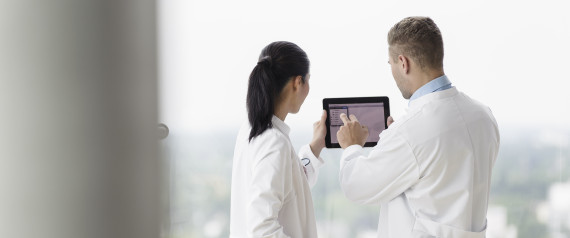With the advent of apps, more and more medical innovations can and are going straight to patients to scale. It turns out that a quarter of the U.S. population doesn't sleep well; I'm one of them. Yet when I asked my doctor about treatments for insomnia, she recommended I cut caffeine and go to a group class, a class that was on the other side of town and at an inconvenient time. I live in San Francisco, tech capital and one of the wealthiest cities in the world, and that's the best on offer? (Clearly for my insurance plan.) On my own, I had to research effective treatment -- and by chance, because I work in health, I saw a startup pitch from Sleepio, an online cognitive behavior treatment program for sleep disturbance marketed directly to the public. Sleepio tailors treatment to the individual based on your history, the latest medical research and evidence-based methods. The cost of the program: $149 for six weeks. Does it work? Ask me in two months. But the big question is how do we expand this affordable, individualized and accessible model to other persistent health issues?
We keep hearing about big data. Let's put it to use for the patient. We know a wide range of data exists that can drive health improvements of individuals and populations. A great example here is geo-medicine, a term coined by Bill Davenhall of Esri, a start-up that looks at geographical and environmental factors related to health. He estimates that 20-30 percent of our health is affected by environment (the balance is your DNA and lifestyle). ESRI has a free app for U.S.-based patients called MyPlaceHistory to look at risk factors based on where you have lived. Using this I learned that within three miles of where I lived in Washington DC, there were five toxic chemical facilities. With a patient-based system, this and other data would be integrated into my healthcare, and with more accessible data for everyone, I optimistically believe it could drive environmental changes that improves health globally.
In low-income markets, the biggest challenge to implementation is corruption. D-Rev, the company I lead, designs and develops affordable, high-quality medical devices targeting populations living on less than $4 per day. We -- and others in our field -- see corruption at all levels, from high levels in government to poor patients paying a fee to jump a long queue at a supposedly cost-freepublic hospital. The most obvious examples are tenders for medical devices that require features that have no medical or patient value, and kickbacks with orders: the purchaser pays $10,000 for devices, they invoice the donor $20,000 and pocket the difference. Less obvious is opacity around pricing, procurement systems and inventory management. Can software and hardware address this? Yes, although the best solutions are coming from outside of health. Improved software -- some that even works on feature phones -- enables better tracking of payments and inventories. With hardware, retail price transparency in an Internet age limits leaks in the payment system. D-Rev has also started to compare purchaser information with like-minded organizations like Gradian, Daktari and One Breath: shady buyers beware.
Creating an enabling environment for innovation to improve health needs one thing: a return to patient-centric value throughout the sector. Can governments better incentivize this? Or will the push need to come from patients and small players like D-Rev? Probably the latter, and change has started.
Authors note: Want to learn about inspiring new health innovations? WIRED UK just wrapped up its first ever Health summit on April 29 in London. They are posting the talks online -- keep an eye out.





